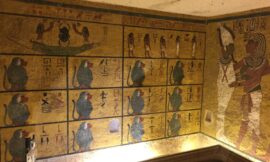The Saturn V rocket stands as one of the most iconic symbols of human space exploration, representing the pinnacle of engineering achievement and the culmination of the Apollo program’s ambitious goal to land astronauts on the Moon. Developed by NASA in the 1960s, the Saturn V remains the tallest, heaviest, and most powerful rocket ever built, serving as the vehicle that propelled the Apollo missions beyond Earth’s atmosphere and towards the lunar surface.
Measuring an astounding 363 feet (111 meters) in height and weighing approximately 6.5 million pounds (2.9 million kilograms) when fully fueled, the Saturn V was comprised of three main stages: the S-IC (first) stage, the S-II (second) stage, and the S-IVB (third) stage, along with the Apollo spacecraft perched atop. Each stage played a crucial role in propelling the spacecraft on its journey into space and ultimately towards the Moon.
The first stage of the Saturn V was powered by five F-1 engines, generating a combined thrust of over 7.5 million pounds (33.4 meganewtons) at liftoff. These engines burned through thousands of gallons of liquid oxygen and kerosene in just over two minutes, providing the initial boost needed to propel the rocket beyond Earth’s atmosphere.
Once the first stage had expended its fuel, it was jettisoned, and the second stage took over. The S-II stage was powered by five J-2 engines, which burned liquid hydrogen and liquid oxygen to continue pushing the spacecraft towards orbit. After the second stage had completed its burn, it too was discarded, leaving the third stage to perform the final push towards lunar trajectory.
The S-IVB stage, also known as the “trans-lunar injection” stage, was powered by a single J-2 engine, which ignited twice: first to place the spacecraft into Earth orbit, and then again to send it on its trajectory towards the Moon. Once the Apollo spacecraft had reached its intended lunar orbit, the S-IVB stage was used as a platform for various experiments and maneuvers before being deliberately crashed into the lunar surface.
The Saturn V made its maiden flight on November 9, 1967, during the uncrewed Apollo 4 mission. Over the next few years, it would go on to launch a total of 13 crewed missions, including the historic Apollo 11 mission in July 1969, which saw astronauts Neil Armstrong, Buzz Aldrin, and Michael Collins become the first humans to set foot on the Moon.
Although the Saturn V was retired after the Apollo program, its legacy continues to inspire and awe people around the world. Its groundbreaking achievements not only demonstrated the incredible capabilities of human ingenuity and determination but also paved the way for future exploration of the cosmos. Today, remnants of the Saturn V can be found on display at museums and space centers across the United States, serving as a tangible reminder of humanity’s quest to reach for the stars.



